- Who We Are
- About Us
- Line Card
- Our History
You have no items in your shopping cart.
You have no items in your shopping cart.
- Resources Resources At The Ready
- AIRpipe
- Bearings & Seals
- Belting & Conveyor
- Belts & Pulleys
- Bushings & Shaft Accessories
- Clutches, Brakes, Tension Control
- Conduit, Fittings & Electrical Boxes
- Couplings
- Enclosures
- Energy Management
- Facility Maintenance
- Gears & Gear Reducers
- Lighting
- Linear Components
- Material Handling
- Motor Control & Load Protection
- Motors
- Networks & Communications
- PLC & Operator Interface
- Plugs, Receptacles, & Switches
- Pneumatics
- Power Distribution
- Power Supplies
- Pushbuttons, Selector Switches & Pilot Lights
- Relays & Timers
- Safety
- Sensors, Encoders & Limit Switches
- Servo & Stepper
- Signaling Devices & Beacons
- Sprockets & Chain
- Training
- Wiring, Cable & Cable Management
- Who We Are
- About Us
- Line Card
- Our History
- Configurator & Part Selection
- CBT Belt Configurator
- Gates Configurator
- Rockwell Configurator

- Customer
- Credit Application
- FAQs
- Locations & Hours
- Resources
- Resources At The Ready
- Training
- Rockwell Learning+
- Training Schedule
- AIRpipe
- Bearings & Seals
- Belting & Conveyor
- Belts & Pulleys
- Bushings & Shaft Accessories
- Clutches, Brakes, Tension Control
- Conduit, Fittings & Electrical Boxes
- Couplings
- Enclosures
- Energy Management
- Facility Maintenance
- Gears & Gear Reducers
- Lighting
- Linear Components
- Material Handling
- Motor Control & Load Protection
- Motors
- Networks & Communications
- PLC & Operator Interface
- Plugs, Receptacles, & Switches
- Pneumatics
- Power Distribution
- Power Supplies
- Pushbuttons, Selector Switches & Pilot Lights
- Relays & Timers
- Safety
- Sensors, Encoders & Limit Switches
- Servo & Stepper
- Signaling Devices & Beacons
- Sprockets & Chain
- Training
- Wiring, Cable & Cable Management
- Who We Are
- About Us
- Line Card
- Our History
- Configurator & Part Selection
- CBT Belt Configurator
- Gates Configurator
- Rockwell Configurator

- Customer
- Credit Application
- FAQs
- Locations & Hours
- Resources
- Resources At The Ready
- Training
- Rockwell Learning+
- Training Schedule


Improve Safety

Complying With OSHA’s Safety Recommendations and Requirements
- Maintaining Lock Out Tag Out procedures and training
- Maintaining Arc Flash Study and one line drawings
- Maintaining Arc Flash Certification for your staff

Meeting the Standards for Machine/Process Safety
- Safety Risk Assessments
- Safety Functional Requirements Specification
- Design & Verify
- Install & Validate

Protecting Your Employees, Equipment, and Facilities
- Glove Testing program
- Personal Protective Equipment
- COVID-19 Protocol
Contact Us
Our dedicated team is standing by, ready to assist you. Need an industrial solution custom-tailored to your needs?
CONTACT US
SITE INFO
Copyright © 2025 CBT Company. All rights reserved.











